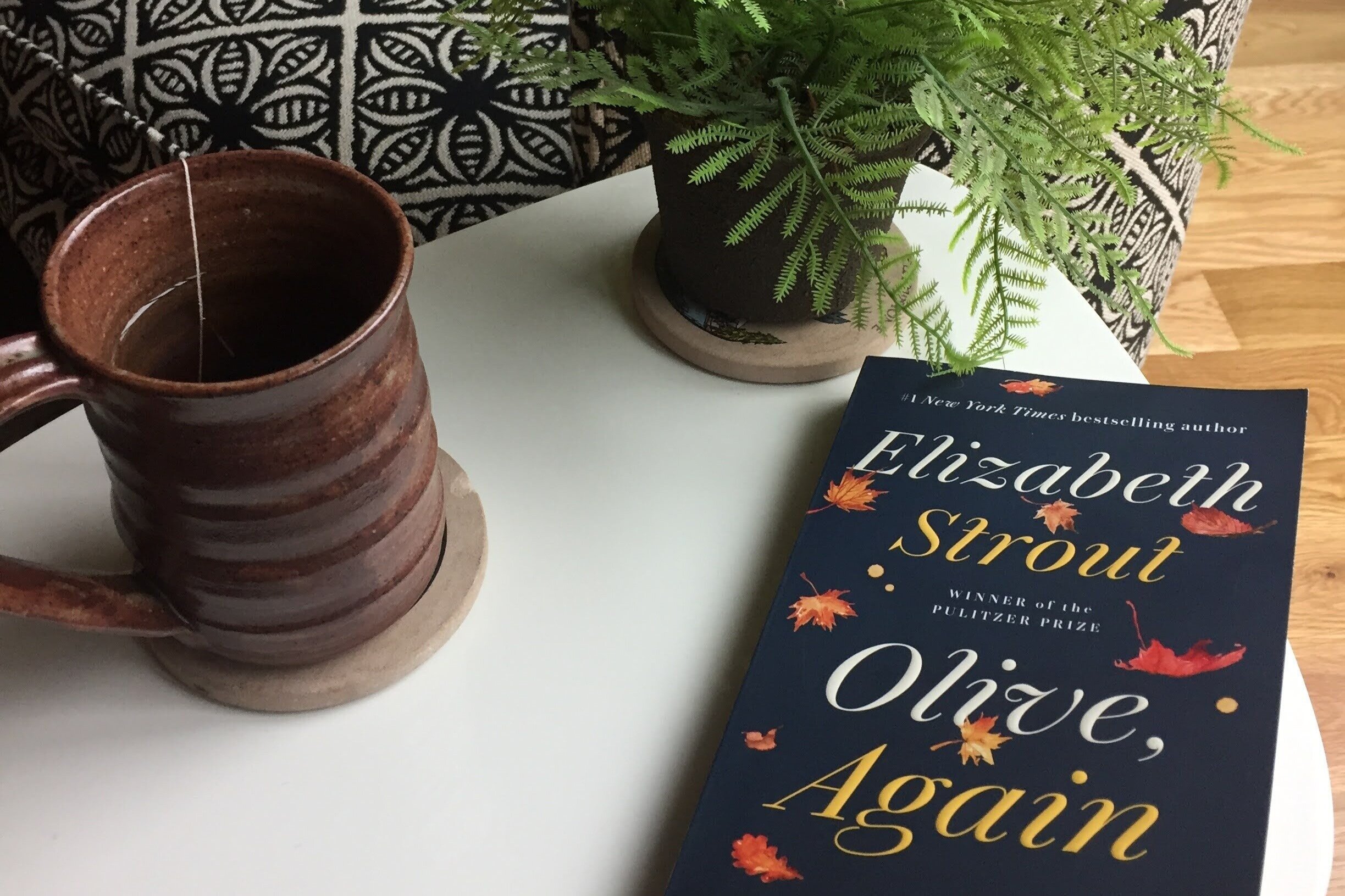Learning from Olive, Again
I tore through reading Olive Kitteridge by Elizabeth Strout, unsure why I was unable to put that book down. With her sequel Olive, Again, I started to understand why. Why are these books so appealing? Yes, Olive is a curmudgeony old lady and we get an inside tour of her aging body and changing relationships, but overlaid atop Olive’s gruff and unfiltered commentary is Elizabeth Strout’s unusual writing techniques.
Redundancy vs Efficiency
Strout uses an incredibly amount of redundancy in these books. This sentence for example:
The woman who checked them in was a pretty woman with glossy hair and when she said she came from New York City originally, Helen was thrilled. (174)
I edited while I read (as I often do) and eliminated one use of “woman.” Why not write it more efficiently as, “The woman who checked them in was pretty with glossy hair…”? But Strout does this all the time. Repeats words in the same sentence. Example B:
“Do you like it up here?” Helen asked, and the woman said she did, she and her family loved it. (174)
Likely because it’s human nature to NOT self-edit. Here’s an experiment: Go to a coffee shop and listen in on two people talking. If you can, transcribe what they say. Real life dialogue is nonsensical. Unedited. Strout’s characters linger on details, repeat them, overstate them. Strout is using language to plop you in her characters’ heads, which makes their dramas feel more important.
Dialogue Within Exposition
Strout also intermixes summary exposition with dialogue, squeezing action and summary into the same paragraph. In the following example, Strout jams dialogue inside a paragraph, using all sorts of punctuation, no paragraph breaks, then switches between exposition even though all characters are in the same room and (theoretically) in scene.
In the kitchen, while sunlight was streaming through the window, he said to Lisa, “Good morning,” and she smiled at him— “Hi, Dad”— and he poured himself a bowl of cereal and took it into the dining room, and then he did something he never did, which was to sit on Ethel’s side of the yellow duct tape, and he did that so he could hear better what they were saying. But they were talking about dish towels. Dish towels! Lisa was saying that she’d like to go to that store out by Cook’s Corner where they have nice dish towels, and Ethel was murmuring something that sounded like Okay, they could do that. Fergus finished his cereal and went back to the kitchen, rinsed his bowl, and told Lisa that he was going off and would see her tonight. “Have a good time,” Lisa said. And then his wife said, “Tell your father to enjoy his day,” which kind of surprised him, and he said to Lisa to tell her mother thank you. (228)
Flipping between dialogue in quotes and dialogue in summary, without using paragraph breaks or even distinct sentences, Strout is adding a strange sort of immediacy to an otherwise extremely regular scene. We are very much with Fergus and only hear, or care about, what he deems important. This writing style keeps certain details in focus while demoting others, even when demoted details are necessary to progress the scene. I have long felt bound by writing in-scene dialogue in quotations. And using paragraph breaks to separate each speaker. But Strout is saying, who cares? Nobody is bound by the rules. Yet she has mastered the skill of mashing in-scene and exposition all in the same paragraph, the same sentence even.
Making Boring & Ordinary Come Alive
In the below paragraph Strout displays a fascinating use of tempo. She manages to write possibly the most plain conversation—two women sharing phone pics of their grandchildren—and make it come alive by adding movement, immediacy, and tempo.
"How are you? Margaret asked, and Helen said she was worried about little Ernie; then Helen brought out her phone and showed Margaret pictures of her grandchildren, Margaret putting on the pair of glasses she wore attached to the black string over her large bosom, peering at the phone and saying, Oh, they were just adorable, weren’t they. “I’ll probably talk about them too much,” Helen said, and Margaret took her glasses off and said, “Oh, no worries,” so Helen showed her two more pictures, then she put her phone away and said, “Shall we go?” And Margaret got her handbag and off they went. (175)
Did you notice that is only 2 sentences? Did you see the use of semi-colon and commas where another writer (like me) might have used periods? Note the present continuous verb choice (-ing) that’s pushing along this oddly intimate middle section, spending a disproportionate number of words describing the “black string over her large bosom.” We are right there with these women. We are reading into their nuances and fears as if we are there. No, as if we are them. Both of them. Somehow, miraculously, at the same exact time. It’s really quite incredible how Strout does this.
Olive, Again reveals just how regular our lives can be. But those regular lives are important to those of us living them. It is worth studying Elizabeth Strout’s novels to really see how well she tucks dialogue into paragraphs, blurs the lines between in-scene and exposition, and focuses on characters physical bodies and internal feelings that give them warmth and a true presence on the page.
Quotes are from: Strout, Elizabeth. Olive, Again. New York, Penguin Random House LLC, 2019.
